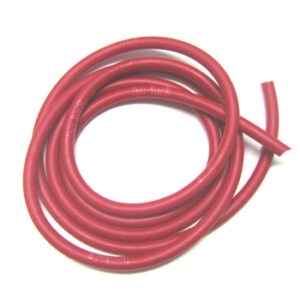Diagnostic Guide – Hip & Groin Pain
Updated:
Patients suffering from hip pain or groin pain are often seen in physiotherapy practice. Pain may be caused by local structures within or around the hip or groin, or, may be referred from other sources (such as the lower back, pelvis or sacroiliac joint).
Sudden onset hip and groin pain often occurs in athletes involved in fast moving change-of-direction sports, kicking sports and those sports which involve rapid acceleration and deceleration (such as football, soccer and basketball). In the general population, these injuries often occur with traumatic weight bearing (e.g. an awkward landing or fall), lifting or twisting forces.These acute injuries often involve tearing of a muscle or tendon within the region. The cartilage or labrum of the hip are also commonly damaged. One of the most common causes of sudden onset pain at the front of the hip is a Hip Flexor Strain (figure 1). Whilst the most likely cause of sudden onset groin pain is a Groin Strain (figure 2). Labral Tears of the hip are also common seen in clinical practise and may present as groin pain or pain in the front of the hip.
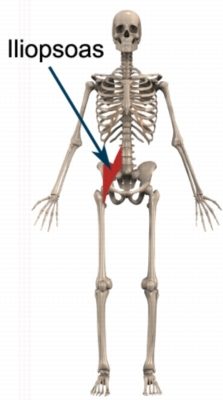
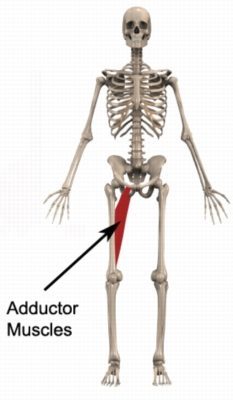
Gradual onset hip and groin pain often occurs in those patients involved in sports or activities that comprise high running loads, repetitive or prolonged weight bearing activity, rapid change-of-direction or twisting, and repetitive kicking. Two of the most common causes of this exercise related gradual onset hip and groin pain are a Labral Tear of the Hip and Osteitis Pubis. In older patients with gradual onset hip or groin pain, the most likely cause of symptoms is degenerative changes in the hip joint, such as Hip Osteoarthritis or in some cases, a Labral Tear of the Hip. In patients with pain located at the outer point of the hip / buttock the most likely cause of symptoms is Gluteal Tendinopathy or Trochanteric Bursitis.
There are numerous other causes of hip and groin pain, some of which present suddenly due to a specific incident, others which develop gradually over time.
Below are some of the more common causes of hip and groin pain with a brief description of each condition to aid diagnosis. Conditions have been organised according to sudden or gradual onset and common or less common conditions for ease of use.
Find out what may be causing your hip and/or groin pain:
Sudden Onset Hip & Groin Pain – Common Injuries
Hip Flexor Strain
Tearing of the hip flexor muscle (iliopsoas – figure 1), typically following a kick on the run or rapid acceleration movement. Associated with localised pain at the front of the hip, difficulty lifting the thigh and often pain on performing a hip flexor stretch (figure 3).
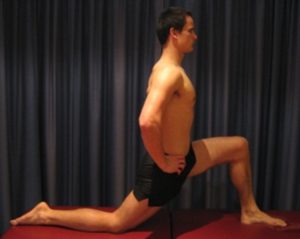
Groin Strain
Tearing of the adductor muscle (figure 2), typically following a forceful kick or change-of-direction movement. Associated with pain on firmly touching the affected region and localised, one-sided groin pain, often aggravated by stretching the affected muscle (figure 4).

Labral Tear
Damage to the cartilage lining the hip joint (labrum – figure 5). Pain is usually deep, although may present as vague groin pain, pain in the front of the hip or buttock pain. A clicking or catching sensation may also be present. Symptoms are usually exacerbated with weight-bearing and twisting activities.
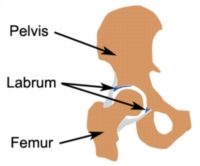
Referred Pain
Pain referred to the hip or groin from another source such as the lower back or sacroiliac joint, often associated with symptoms above or below the hip (such as lower back pain or stiffness or pain in the thigh, lower leg, ankle or foot). Typically associated with pain on firmly touching the region responsible for the referred pain. Sometimes in association with pins and needles or numbness in the affected leg or foot.
Less Common Sudden Onset Injuries
Femoral Neck Fracture
A break in the upper aspect of the thigh bone, usually due to a fall onto the side of that hip or thigh. More common in elderly patients (particularly women) and those suffering from reduced bone density, such as osteoporosis. Pain is usually quite severe and often results in an inability to weight-bear.
Inguinal Hernia
A protrusion of abdominal-cavity contents through the inguinal canal located at the front of the hip / groin. There may be associated swelling and tenderness on touching the affected area. Pain may be elicited by coughing, sneezing or straining activities.
Gradual Onset Hip & Groin Pain – Common Injuries

Members Only ContentBecome a PhysioAdvisor Member to gain full access to this exclusive content. For more details see Become a Member. Already a member? Login Now
Less Common Gradual Onset Injuries

Members Only ContentBecome a PhysioAdvisor Member to gain full access to this exclusive content. For more details see Become a Member. Already a member? Login Now
Diagnosis of hip & groin pain
A thorough subjective and objective examination from a physiotherapist is usually sufficient to diagnose the cause of hip & groin pain. Investigations such as an X-ray, ultrasound, MRI, CT scan or bone scan are often required to confirm diagnosis and rule out other injuries.
 Find a Physio
Find a Physio
Find a physiotherapist in your local area who can diagnose and treat patients suffering from hip & groin pain.
 More Information
More Information
- View more Hip Stretches.
- View more Hip Strengthening Exercises.
- View Groin Stretches.
- View Groin Strengthening Exercises.
- View detailed information on How to use Crutches.
- View detailed information on when to use Ice or Heat.
- View detailed information on initial injury management and the R.I.C.E Regime.
- View detailed information on Do I Need Orthotics?
- View detailed information on Choosing a Shoe.
- View detailed information on a Return to Running Program.
 Physiotherapy products for hip & groin pain
Physiotherapy products for hip & groin pain
Some of the most commonly recommended products by physiotherapist for patients with hip and groin injuries include:
To purchase physiotherapy products to assist with rehabilitation click on one of the above links or visit the PhysioAdvisor Shop.

Link to this Page
If you would like to link to this article on your website, simply copy the code below and add it to your page:
<a href="https://physioadvisor.com.au/injuries/hip-groin”>Diagnostic Guide – Hip & Groin Pain – PhysioAdvisor.com</a><br/>PhysioAdvisor provides a hip & groin diagnosis guide for patients suffering from hip and groin pain, created by experienced physiotherapists.
Return to the top of Diagnostic Guide – Hip & Groin Pain.

